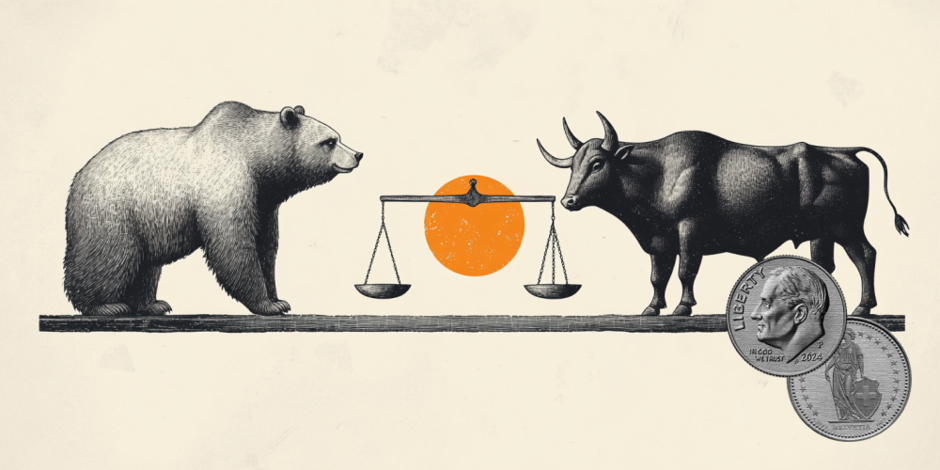USD/CHF remains steady above 0.9050 amid market volatility on Trump's inauguration
- USD/CHF appreciated following news that President Trump intends to direct federal agencies to review tariff policies.
- Traders speculate that Trump’s policies could lead to inflationary pressures, possibly restricting the Fed to just one more rate cut.
- The Swiss Franc remains generally weak as investors expect the Swiss National Bank to continue lowering interest rates.

USD/CHF holds ground after experiencing volatility, trading around 0.9070 during the Asian session on Tuesday. The US Dollar saw volatility as US President Donald Trump's inauguration day made waves. However, the USD faced downward pressure as Trump appeared to strengthen his relationship with Chinese President Xi Jinping, with the TikTok deal and a potentially softer approach to tariffs contributing to the shift.
The US Dollar (USD) regained ground following news that President Donald Trump intends to direct federal agencies to review tariff policies and evaluate the United States' trade relationships with Canada, Mexico, and China.
The US Dollar Index (DXY), which tracks the performance of the US Dollar against six major currencies, trades around 108.30 after trimming recent gains. The US Dollar receives downward pressure as the US Treasury yields on 2-year and 10-year bonds remain subdued at 4.23% and 4.54%, respectively, at the time of writing.
According to the CME FedWatch tool, traders anticipate that the US Federal Reserve (Fed) will maintain borrowing rates within the current range of 4.25%-4.50% over the next three policy meetings. However, investors speculate that policies under Trump’s administration could trigger inflationary pressures, potentially limiting the Fed to only one additional rate cut.
The Swiss Franc (CHF) remains broadly weak as investors anticipate that the Swiss National Bank (SNB) could continue to reduce interest rates. Swiss interest rates have already been lowered to 0.5% due to concerns over inflation remaining below the central bank’s target.
The traditionally safe-haven Swiss Franc (CHF) may face challenges as geopolitical tensions in the Middle East ease. Traders are closely watching developments related to a long-delayed ceasefire agreement and a hostage release deal between Israel and Hamas.
Swiss Franc FAQs
The Swiss Franc (CHF) is Switzerland’s official currency. It is among the top ten most traded currencies globally, reaching volumes that well exceed the size of the Swiss economy. Its value is determined by the broad market sentiment, the country’s economic health or action taken by the Swiss National Bank (SNB), among other factors. Between 2011 and 2015, the Swiss Franc was pegged to the Euro (EUR). The peg was abruptly removed, resulting in a more than 20% increase in the Franc’s value, causing a turmoil in markets. Even though the peg isn’t in force anymore, CHF fortunes tend to be highly correlated with the Euro ones due to the high dependency of the Swiss economy on the neighboring Eurozone.
The Swiss Franc (CHF) is considered a safe-haven asset, or a currency that investors tend to buy in times of market stress. This is due to the perceived status of Switzerland in the world: a stable economy, a strong export sector, big central bank reserves or a longstanding political stance towards neutrality in global conflicts make the country’s currency a good choice for investors fleeing from risks. Turbulent times are likely to strengthen CHF value against other currencies that are seen as more risky to invest in.
The Swiss National Bank (SNB) meets four times a year – once every quarter, less than other major central banks – to decide on monetary policy. The bank aims for an annual inflation rate of less than 2%. When inflation is above target or forecasted to be above target in the foreseeable future, the bank will attempt to tame price growth by raising its policy rate. Higher interest rates are generally positive for the Swiss Franc (CHF) as they lead to higher yields, making the country a more attractive place for investors. On the contrary, lower interest rates tend to weaken CHF.
Macroeconomic data releases in Switzerland are key to assessing the state of the economy and can impact the Swiss Franc’s (CHF) valuation. The Swiss economy is broadly stable, but any sudden change in economic growth, inflation, current account or the central bank’s currency reserves have the potential to trigger moves in CHF. Generally, high economic growth, low unemployment and high confidence are good for CHF. Conversely, if economic data points to weakening momentum, CHF is likely to depreciate.
As a small and open economy, Switzerland is heavily dependent on the health of the neighboring Eurozone economies. The broader European Union is Switzerland’s main economic partner and a key political ally, so macroeconomic and monetary policy stability in the Eurozone is essential for Switzerland and, thus, for the Swiss Franc (CHF). With such dependency, some models suggest that the correlation between the fortunes of the Euro (EUR) and the CHF is more than 90%, or close to perfect.
Author

Akhtar Faruqui
FXStreet
Akhtar Faruqui is a Forex Analyst based in New Delhi, India. With a keen eye for market trends and a passion for dissecting complex financial dynamics, he is dedicated to delivering accurate and insightful Forex news and analysis.

















